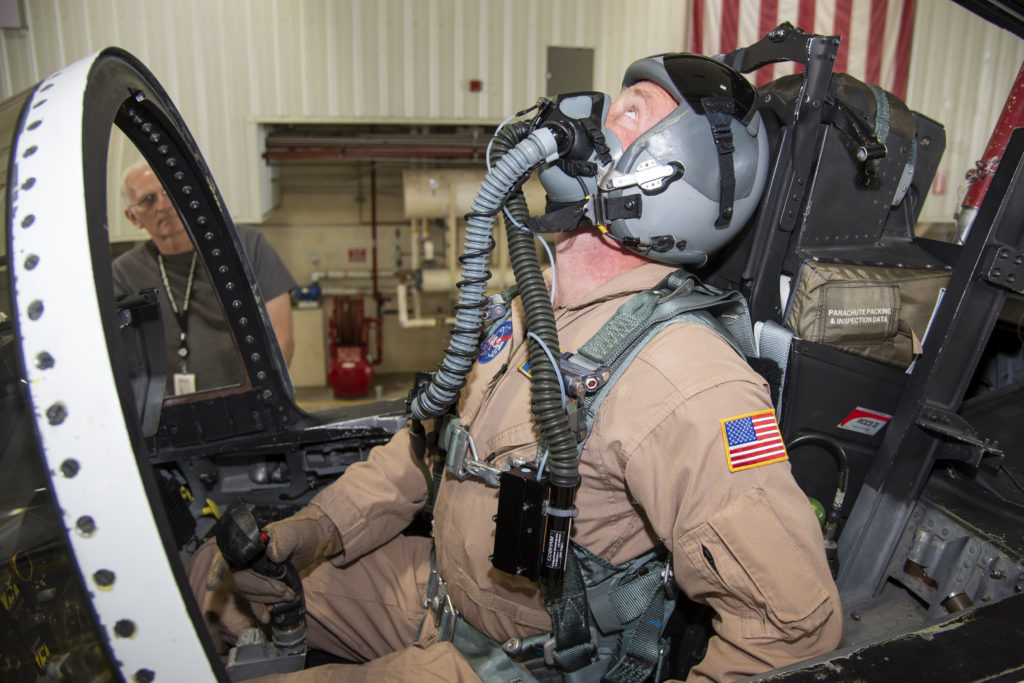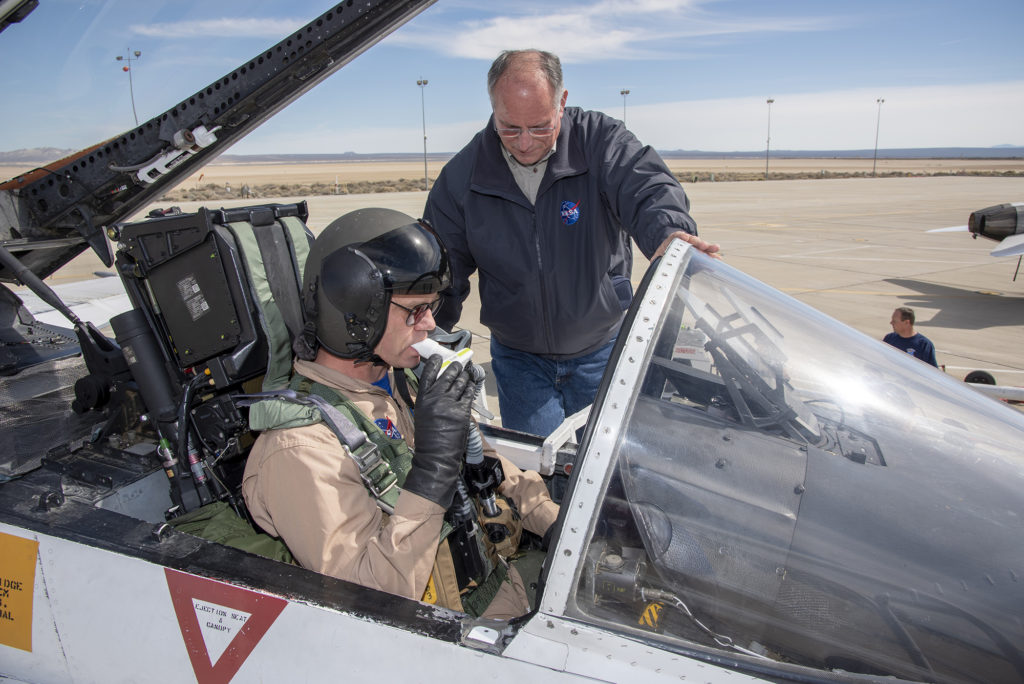Estimated reading time 11 minutes, 44 seconds.
From the U.S. Navy’s older T-45 Goshawk jet trainer to the state-of-the-art fifth generation F-35 Lightning II fighter – and every high performance aircraft in between – military pilots are susceptible to breathing problems that could trigger the deadly onslaught of hypoxia.
At its simplest, hypoxia is caused by a lack of oxygen to the brain, blood, tissues and cells. Without enough oxygen, humans cannot function normally. The signs and symptoms of hypoxia can vary by individual and circumstances, but commonly include tingling extremities, confusion, visual changes, nausea, dizziness, fatigue, anxiety and/or euphoria.
Hypoxia impairs comprehension and affects the ability to follow commands or remember habitual procedures. It could prevent pilots from realizing that survival depends on using backup oxygen systems or dropping to a lower altitude, where it is easier to breathe.

While military pilots use oxygen masks and other systems to help them breathe at high altitudes and during physically demanding maneuvers, hypoxia has remained a persistent problem. Since 2010, pilot breathing problems have been increasingly reported, although their underlying cause has not been fully understood.
In 2017, the U.S. Navy (USN) asked the NASA Engineering and Safety Center (NESC), based at Virginia’s Langley Research Center, to conduct an independent review of increased physiological episodes (PEs) among its F/A-18 Hornet pilots. PEs are extremely concerning because they could ultimately lead to loss of life and aircraft.
In its investigations, the military has typically focused on making improvements to onboard oxygen supplies, personal gear and environmental controls. However, the NESC team realized little had been done to study the human in the cockpit and how physiology meshes with aircraft breathing systems. That premise is the underlying methodology behind the Pilot Breathing Assessment (PBA) project – a two-volume report (see Vol. 1 and Vol. 2) released in March 2021 that includes nearly 800 pages of findings gathered from a decade of research into how fighter pilots breathe.
“This is the last of three studies conducted in the past 10 years into high performance aircraft PEs where pilots experienced loss of performance due to lack of oxygen,” explained Lance Richards, NESC chief engineer at NASA’s Armstrong Flight Research Center in Edwards, California, where flight testing was conducted. “Information did not exist prior to this review.”
Beginning in early 2018 and concluding in the fall of 2020, the final study saw five experienced NASA test pilots fly six flight profiles in either F-15D Eagle or F-18A/B Hornet aircraft. In total, the assessment logged 127 flights and 4,750 minutes of data which can be used to analyze how pilots interacted with the aircraft during flight.

“Everything was focused on human breathing demands while pilots performed in an actual flight environment,” said Richards. “We were able to link a real world event to pilot breathing behavior.”
Pilots wore USN and U.S. Air Force (USAF) pilot gear as well as a new mask sensor. NESC measured the pilots’ inhalation and exhalation oxygen lines as well as oxygen volumes inside their face masks. Measurements were taken to quantify the volume of air inspired and expired by the lungs both before and after flight. Pilots also provided information about diet, exercise and other factors that could influence each mission.
Test flights, while considered challenging, did not simulate the full extent of military combat.
Nevertheless, “breathing issues still occurred on a number of flights. In support of the work done by the U.S. military, this presents standardized profile and flight test procedures. We were able to develop a robust set of testing methods to help diagnose breathing problems in these jets,” said Richards.
He added that prior to the PBA, the scientific community believed that pilot breathing systems were largely defined by pressure and flow relationships – if those factors were adequate, breathing should not be impaired.
“But a key finding from PBA was that we identified timing and sequence issues, we called them breathing sequence disruptions, that interrupted airflow at times. In the first part of the breathing cycle, you might get too little, but then later too much. We found pressure no-flow situations and pilot mask valve malfunctions. We also saw that cabin pressure fluctuations could cause negative implications for pilot breathing.”

In some cases during testing, a somewhat unremarkable flight could cause pilot oxygen saturation levels to drop to 95 per cent – the definition of mild hypoxia.
F-35 data merits a “closer look”
Investigators also reviewed USAF data from two F-35 ground tests conducted using identical testing equipment to the NESC experiments.
“These tests were performed by an experienced pilot in a flight configuration, but they were conducted on the ground,” explained Richards. “We were made aware of these data and used our analytical techniques to analyze them. These tests confirm the same kinds of conditions I noted previously. At times, the pilot would demand oxygen and got nothing, and at times they received too much. Both jets exhibited the same behaviors and data is consistent between the two jets and consistent with pilot observations.”
Concerned, NASA presented its preliminary results to the F-35 Joint Program Office (JPO) in 2019.
“We also published our results in December 2020 and briefed the F-35 JPO of our results,” said Richards. “We are not aware of any efforts to follow up.”
He continued: “We are just letting the data speak for itself. We are saying listen to [F-35] pilots when they say there is a problem, because the data supports those observations and the simple limited data set we acquired does appear to be concerning. Our key recommendation is that these observations really do deserve a closer look.”
Meanwhile, NESC is focused on what can be done today to reduce PEs in high performance aircraft cockpits. Data from the PBA project can be used to establish physiological human requirements during flight. Analytical processes developed during the study can be used to evaluate aircraft breathing systems, informing the equipment development process by including the human component rather than just typical pressure and flow relationships.
Richards said test methodologies are broadly applicable to any aircraft being monitored, as long as the pilot is fitted with a system that can record their breathing in flight.
After the final PBA report was released, NASA engineers issued an open invitation to aircraft equipment manufacturers to discuss the results. Cobham and Honeywell responded and were briefed at length.
“We’d like the manufacturers of flight crew equipment to have an appreciation for how these individual components interact with other components, the human being and the environment,” said Jon Haas, NESC associate principal engineer. “Historically, we tend to focus on individual components. But our study found many important interactions between all of these things … The knowledge the PBA generated can help other aircraft teams design experiments to get to the bottom of their issues.”
Richards agreed. “Our goal is to ensure that whoever follows in our footsteps has the information we learned and the methods are defined on how they can acquire their own data.”








